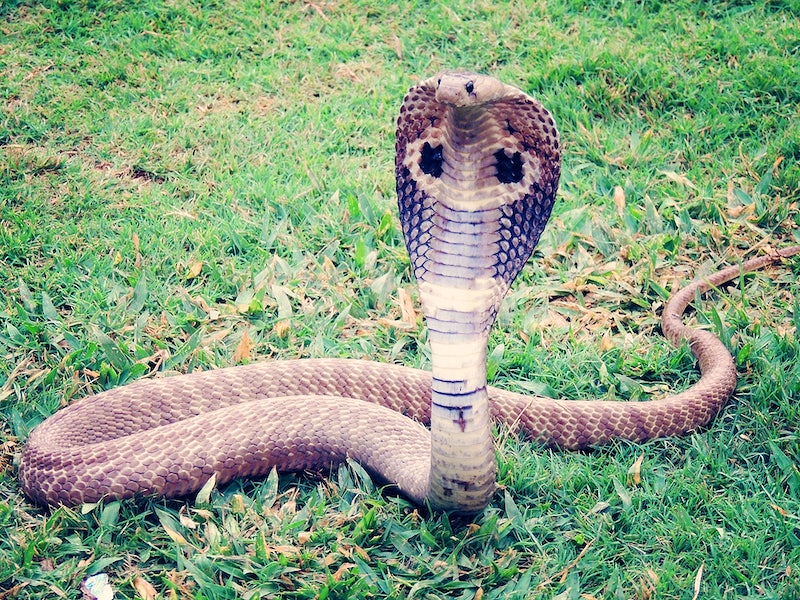Welcome, adventurous travelers, to the wild and captivating lands of Africa! Known for its breathtaking landscapes, diverse ecosystems, and unparalleled wildlife, Africa is a continent that pulls at the heartstrings of explorers and nature enthusiasts alike.
The thrill of witnessing the majestic Big Five in their natural habitat, the enchantment of a night under the starlit savannah, or the tranquility of a serene sunset over the African plains – these experiences are truly unique and utterly unforgettable.
However, amidst the awe-inspiring beauty and diversity, it’s crucial for every visitor to remember that Africa’s wilderness also harbors risks, some of which come in the form of the continent’s fascinating, yet potentially dangerous reptiles.
Africa is home to a staggering variety of reptilian species. From the vast Sahara to the dense rainforests of Central Africa, one can find over 1,500 species of reptiles, ranging from formidable Nile crocodiles to the elusive African chameleon. With 500 snake species and over 200 different types of lizards, Africa stands as a wonderland for herpetologists and wildlife enthusiasts alike
Encountering African Reptiles
While the chances of an encounter are slim if you’re respecting local advice and remaining on designated paths and campsites, understanding these creatures and the potential risks they pose can add a layer of safety to your trip, not to mention the thrill of knowing what might be slithering in the undergrowth nearby!
In this article, we’ll journey into the heart of Africa’s wild territories, shedding light on the ten most dangerous reptiles that call this continent home.
We’ll explore their habitats, understand their behaviors, and most importantly, provide tips on how to avoid dangerous encounters. After all, knowledge and respect for these creatures not only contributes to a safer journey, but also enhances our understanding and appreciation for Africa’s rich biodiversity. Let’s dive in!
Nile Crocodile
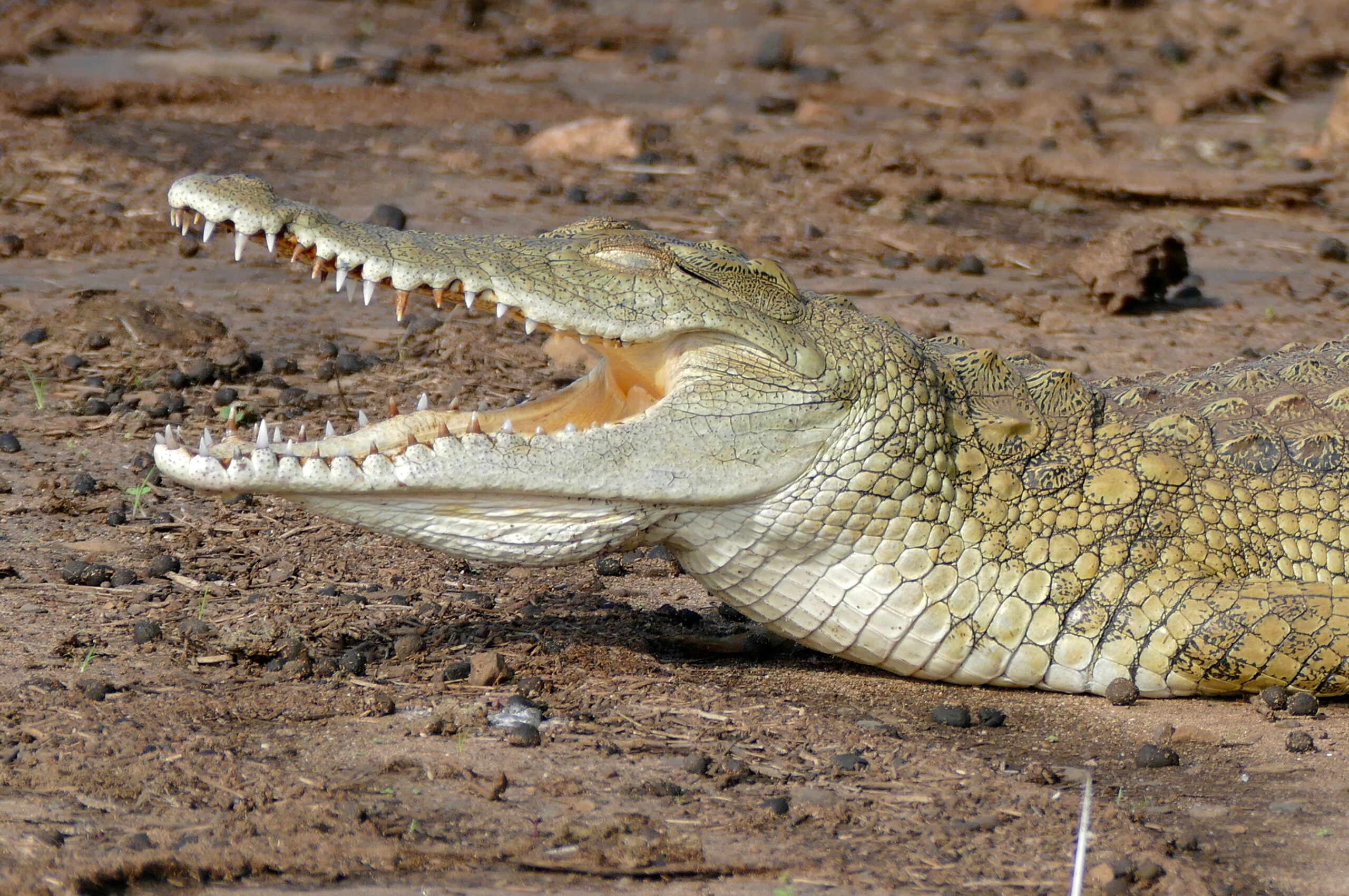
The Nile Crocodile is the largest reptile in Africa, and one of the most dangerous. They are responsible for hundreds of human fatalities each year.
Nile crocodiles are the largest reptiles in Africa, growing up to 5 meters long. They have a dark bronze colour with black crossbands on the body and tail. Their eyes, ears, and nostrils are located on top of the head, allowing them to stay mostly submerged while watching for prey.
Nile crocodiles inhabit a wide range of aquatic habitats including lakes, rivers, and marshlands across sub-Saharan Africa. These animals are opportunistic apex predators and are known to attack humans who come too close to the water’s edge, often with fatal results. To avoid encounters, stay well away from the water’s edge in areas inhabited by Nile crocodiles, especially during the evening and night when they are most active.
Before setting off on your next adventure, it’s crucial to consider your safety and peace of mind. Unexpected events can occur, and the right travel insurance policy can make all the difference in the world. Check out our top recommended travel insurance here. By using our link, you not only secure an exclusive deal but also support our platform, ensuring we continue bringing you invaluable travel insights!
Puff Adder
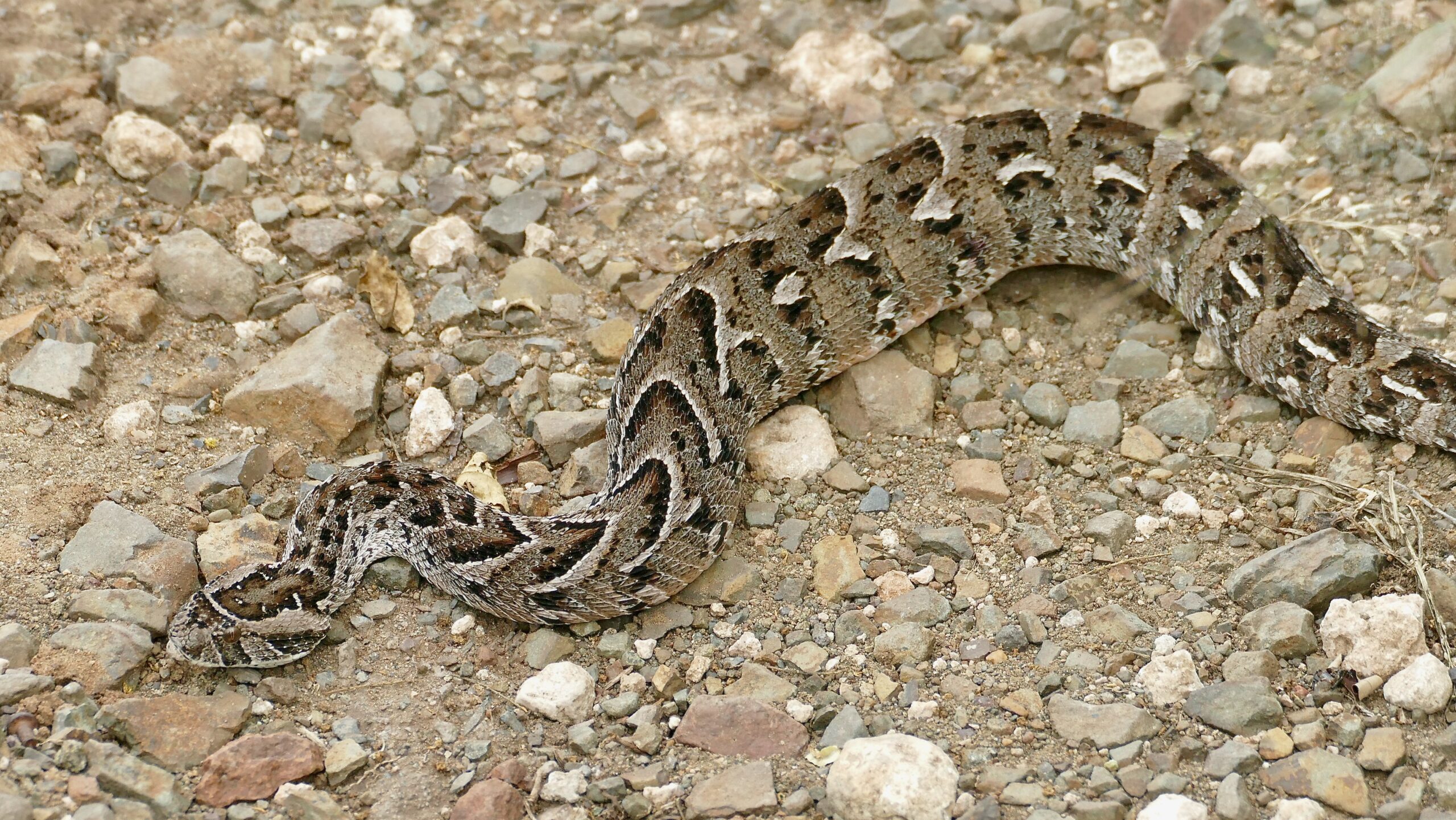
This venomous viper is responsible for causing the most snakebite fatalities in Africa due to its wide distribution, large size, potent venom, and tendency to bask in areas frequented by humans.
Puff Adders are robust and heavily built snakes. They can grow up to 1 meter long, with males being larger than females. They have a broad, flattened and triangular head. Their body color can vary from yellow, brown to orange with chevron-shaped markings.
The Puff Adder is found throughout sub-Saharan Africa, and in parts of the Arabian Peninsula. They can inhabit a wide range of environments, from grasslands to desert regions, and are often found around human settlements. They pose a danger due to their potent cytotoxic venom that can cause severe swelling, pain, blistering, and potentially death if untreated. To avoid risks, be aware of your surroundings, especially when walking in long grass or at night, and wear appropriate footwear and clothing.
Black Mamba

This is one of the most venomous snakes in the world, and it’s also the fastest moving snake on earth. The black mamba’s venom is extremely potent and fast-acting, making this a very dangerous snake. Black Mambas can grow up to 4.5 meters, making them one of the longest venomous snakes in the world. Despite their name, Black Mambas are not black but brown or olive in colour. They are named for the blue-black color of the inside of their mouth, which they display when threatened.
Black mambas are widely distributed across eastern and southern Africa. They inhabit savannas, woodlands, rocky slopes, and dense forests. Their venom is neurotoxic, causing rapid paralysis and respiratory failure in its victims. They are extremely fast and can be aggressive when threatened. Avoiding black mambas involves being vigilant in their habitats, not provoking them, and seeking immediate medical help if bitten.
Boomslang
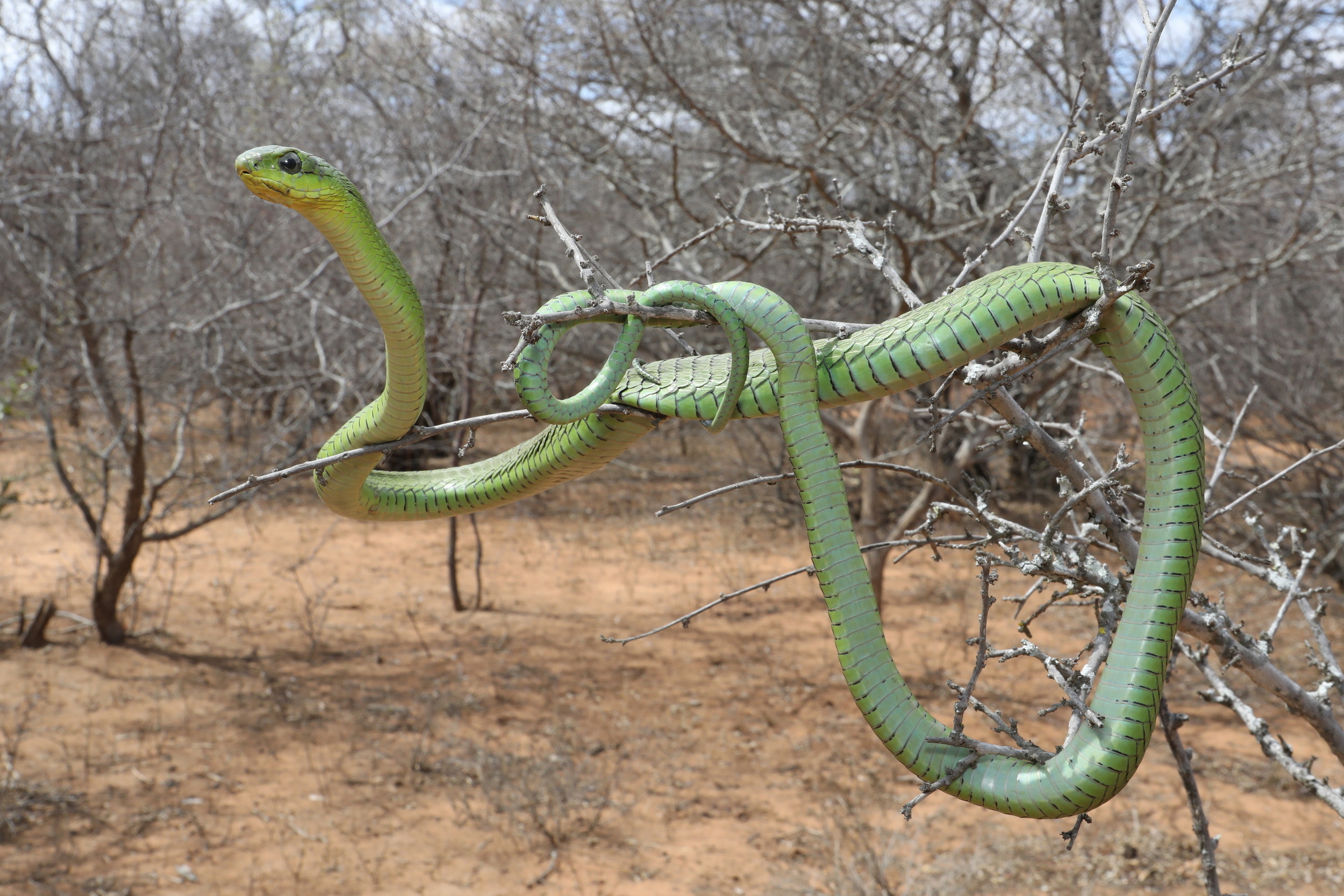
The boomslang has a highly potent hemotoxic venom which can cause bleeding and other severe symptoms. Its bites can be fatal if not treated promptly.
Boomslangs can reach lengths of up to 1.6 meters. They have exceptionally large eyes, indicative of their diurnal tree-living (arboreal) habits. Males can be brightly coloured, varying from green to a rusty brown, while females are typically brown.
Boomslangs are found in sub-Saharan Africa, particularly in trees in forests and savannas. They pose a risk due to their hemotoxic venom that disrupts the clotting process, which can lead to internal and external bleeding. To avoid encounters, be mindful of your surroundings, especially in forested areas, and do not attempt to handle or provoke them.
Gaboon Viper
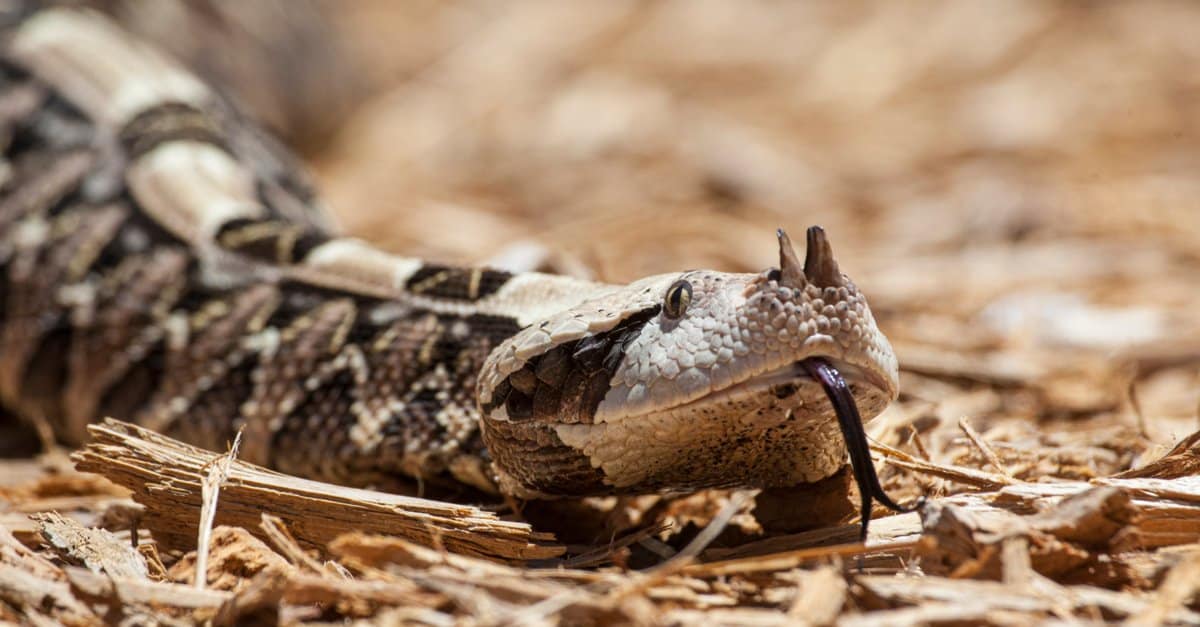
This is the heaviest viper in Africa and it has the longest fangs of any snake. Its venom can cause serious tissue damage and can be lethal to humans.
Gaboon vipers are thick-bodied snakes and can reach up to 2 meters long. They have a characteristic triangular head and horns between their nostrils. They have a beautiful pattern of rectangles and triangles in pink, brown, and black, which aids in camouflage.
Gaboon vipers inhabit the rainforests and savannas of sub-Saharan Africa. They pose a risk due to their potent cytotoxic venom which can cause severe pain, swelling, and tissue damage. They’re well-camouflaged and often lie motionless, increasing the risk of accidental encounters. Avoid risks by being cautious and alert in areas where they are known to inhabit, and avoid handling them.
Cape Cobra
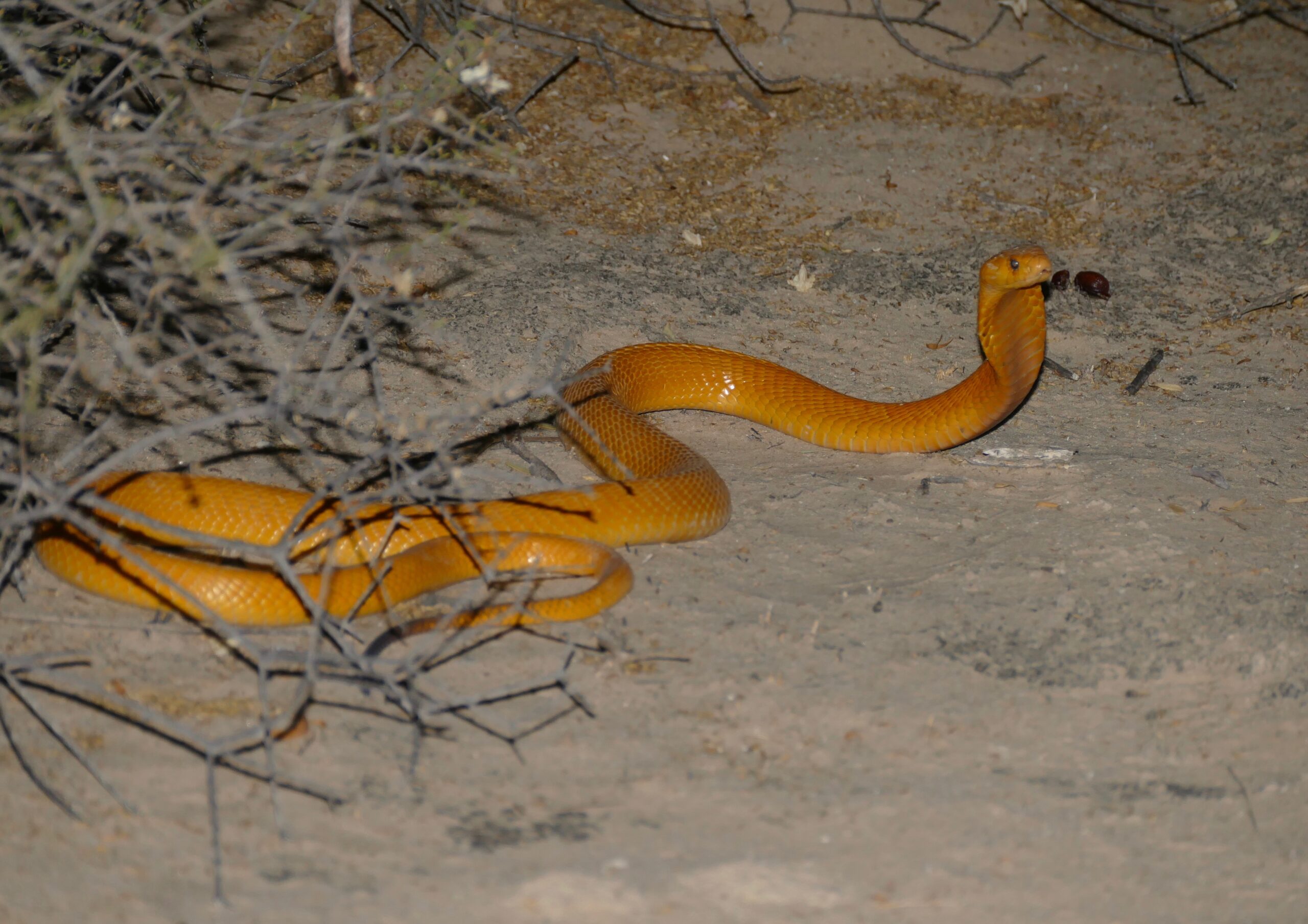
Cape Cobras range from 1.2 to 2.4 meters in length. They are slender-bodied and have a broad, flat head. Their coloration varies widely and can be anything from yellow through reddish-brown to black.
The Cape Cobra’s venom is highly neurotoxic and can cause death by respiratory failure. They are considered one of the most dangerous cobra species in Africa.
Cape Cobras are found in diverse habitats across southern Africa, from desert to grassland and bushland areas. They are highly venomous with neurotoxic venom that can cause respiratory failure and death. Avoid them by being aware of your surroundings and not provoking or attempting to handle them.
Mozambique Spitting Cobra
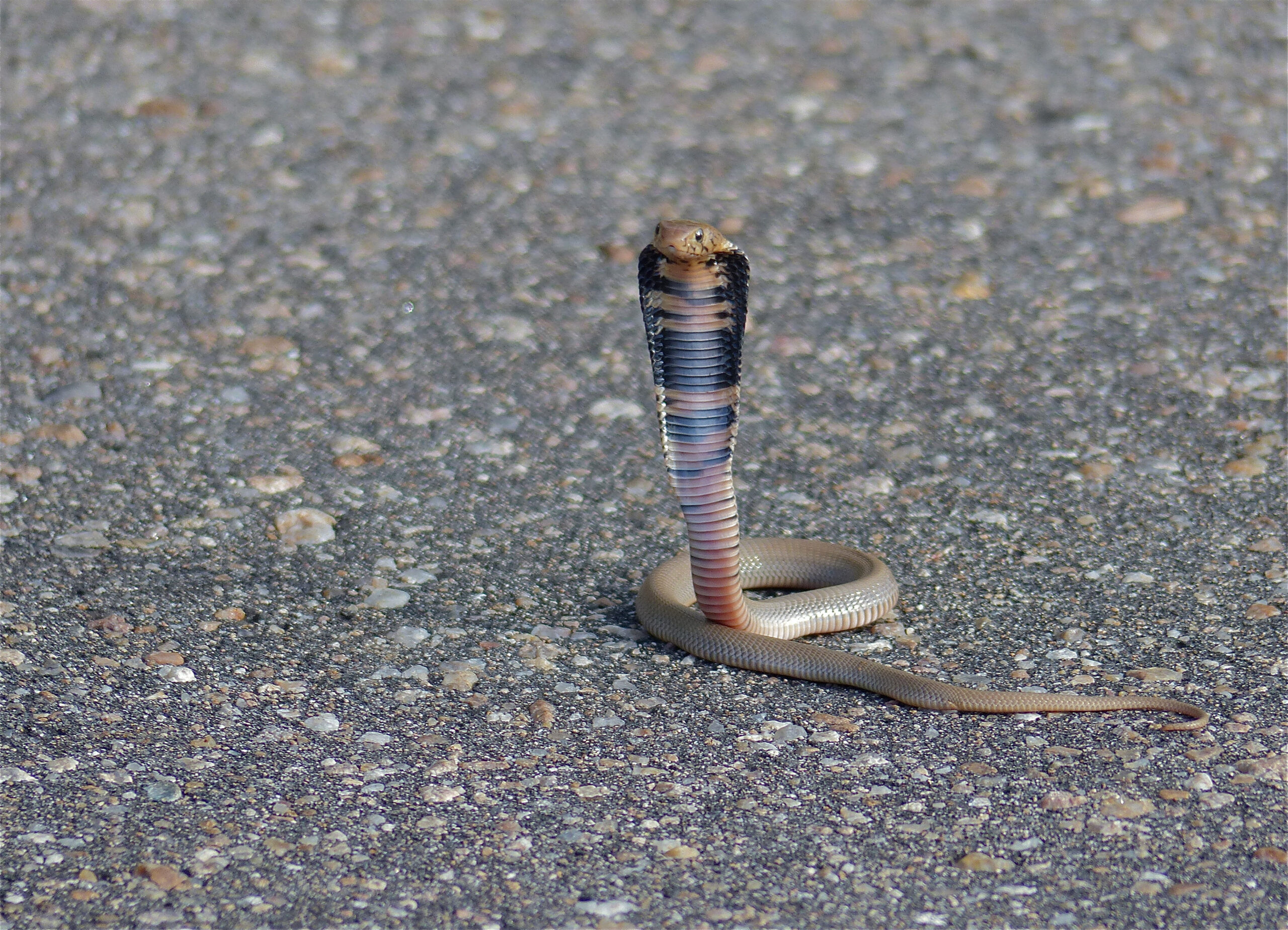
This snake is known for its ability to accurately spit venom when threatened. Its venom can cause severe pain, blindness if it enters the eyes, and potentially death if it’s not treated quickly.
They grow to an average length of 1.2 to 1.5 meters. Their coloration varies from light brown to grey or black, with some individuals displaying speckling or banding.
These cobras are found in a variety of habitats in sub-Saharan Africa. They can spit venom as a defense mechanism, which can cause pain and potentially blindness if it enters the eyes. Avoid encounters by maintaining a safe distance, wearing protective clothing, and using eye protection in areas where these snakes are common.
African Rock Python
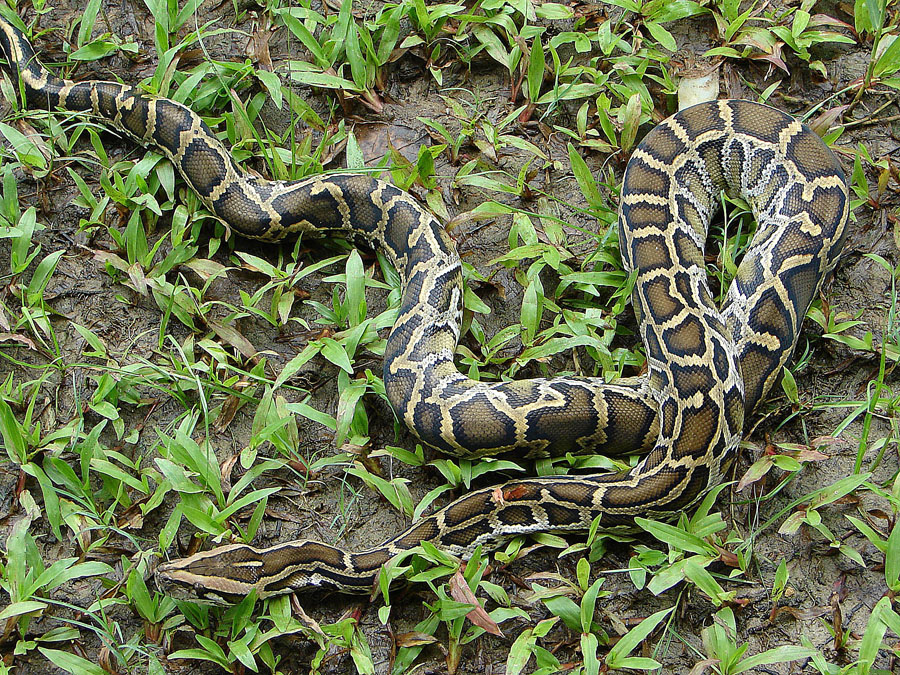
These are one of the largest snake species in the world, reaching lengths up to 6 meters. They have a thick body covered with colored blotches often joining up in a broad, irregular stripe.
While not venomous, the African Rock Python is one of the largest snake species in the world and can pose a danger to humans due to its size and strength, particularly small children.
These large snakes are found in a variety of habitats across sub-Saharan Africa. While not venomous, their size and strength allow them to constrict and suffocate their prey, which can include small humans. Avoid risks by keeping a safe distance and never attempting to handle or provoke them.
Monitar Lizards
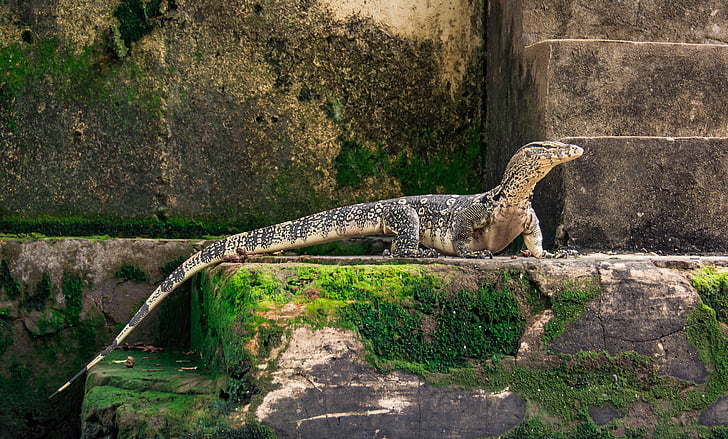
Monitor Lizards can vary greatly in size, but many of the African species, like the Nile Monitor, can reach up to 2.1 meters in length. They have elongated bodies, strong limbs, a powerful tail, and a long neck with a small head.
The two species found in Africa, the Nile monitor and the savannah monitor, can inflict serious bites with their sharp teeth and strong jaws, and their claws can cause deep scratches.
Monitor lizards are found in a wide range of habitats across Africa. While they typically flee from humans, they can bite or use their tail as a whip if cornered. Avoid risks by not cornering or attempting to handle these creatures.
Egyptian Cobra
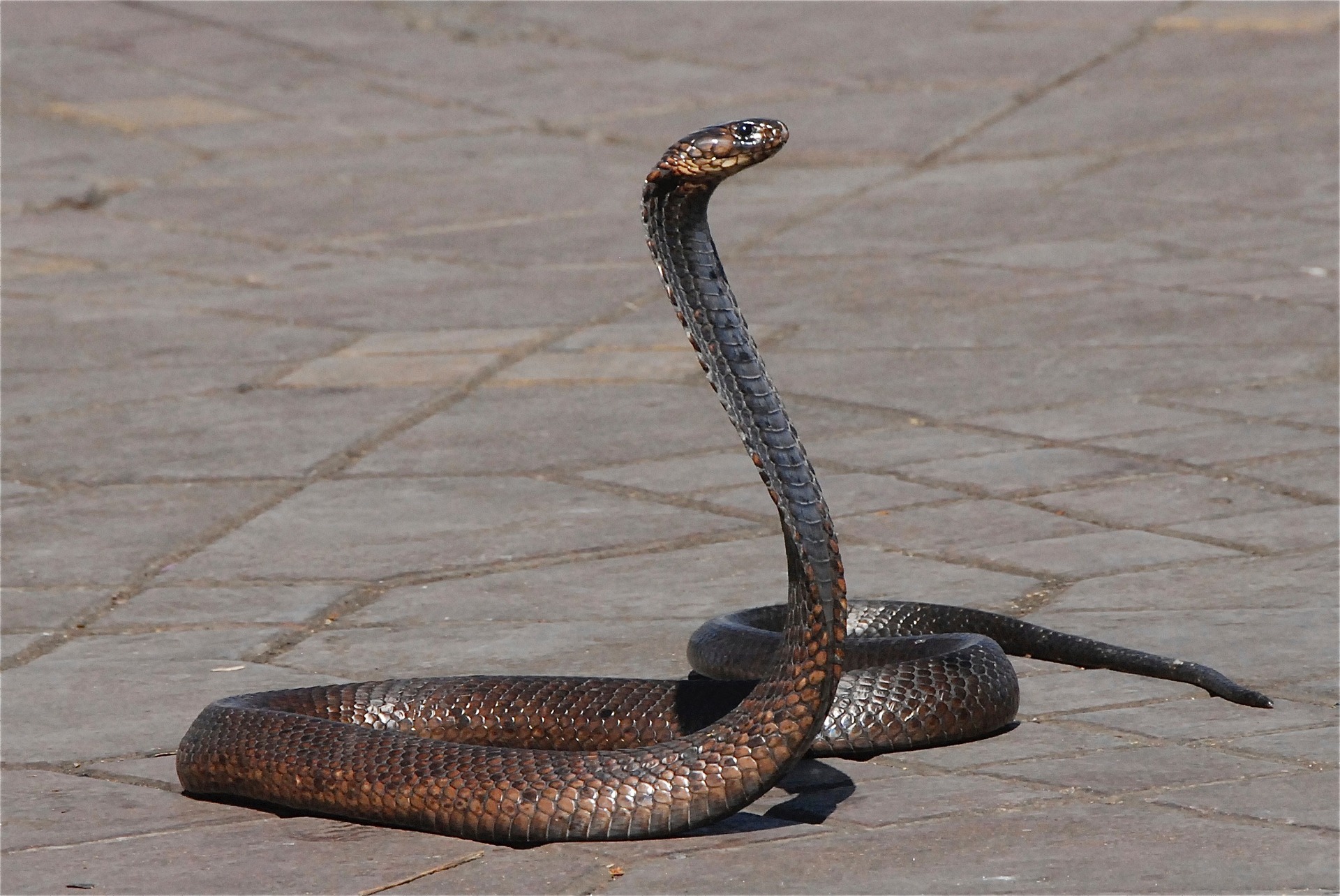
Egyptian Cobras are large and robust, reaching lengths up to 2 meters. They are usually brown or coppery in color and have a broad, flattened head. When threatened, they can display a hood by spreading the ribs in their neck.
This cobra has very potent neurotoxic venom that can cause death in humans by respiratory failure.
Egyptian Cobras are found across North Africa. They are highly venomous and their bite can lead to death by respiratory failure. Avoid them by being cautious and vigilant in areas where they are known to inhabit, and never attempt to handle them.
Stay Safe from Dangerous Reptiles
Remember, many dangerous encounters with wildlife can be avoided by maintaining a respectful distance, not cornering or provoking the animal, and being aware of your surroundings, especially in areas where these reptiles are known to inhabit.

